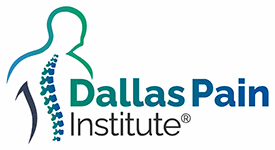Call for an appointment today! (903) 892-1999
Medial Branch Block
Medial Branch Block: A Targeted Approach to Alleviating Spinal Pain
Medial branch nerves are minute nerve branches responsible for transmitting pain signals caused by the facet joints in the spine. These particular nerves do not have any control over muscles or sensations in the arms or legs. Instead, they are situated along a bony groove in the low back and neck, and over a bone in the mid-back. A procedure involving these nerves has likely been recommended due to compelling evidence that the facet joints are the source of your pain. Blocking these medial branch nerves with an anesthetic could be a vital step in determining if a more enduring blockage could furnish long-term pain relief.
Preparing for the Procedure
General Pre-injection Instructions:
- Allergies: Inform our staff if you have any allergies, especially to iodine.
- Fasting: Do NOT eat on the morning of the procedure if you’ll be sedated.
- Insulin: Diabetic patients on insulin should adjust their morning dose due to fasting.
- Routine Medications: Continue with regular medications like high blood pressure and diabetic meds (e.g., Glucophage).
- Pain Medications: Do not stop pain or anti-inflammatory medications on the day.
- Blood Thinners: Notify us if you’re on Coumadin or other blood thinners, so we can prepare accordingly.
- Transportation: It’s advisable to arrange for someone to drive you home after the procedure.
Medial Branch Block Procedure Details
- Positioning: You’ll be placed on your stomach to enable the physician to see the areas where the medial branch nerves pass, using x-ray guidance.
- Cleaning: The targeted area is cleaned with antibacterial soap.
- Numbing: A small section of the skin is numbed with anesthetic, causing brief stinging.
- Needle Placement: Using x-ray guidance, the physician guides a fine needle near the specific nerve being targeted.
- Anesthetic Injection: A small amount of numbing medicine (local anesthetic) is injected. This typically doesn’t provoke your usual pain.
Recovery and Aftercare
What Happens After the Procedure?:
- You will be taken to a recovery room and assessed for improved neck or back movement.
- You’ll be asked to report the percentage of pain relief.
- Temporary weakness or numbness in the arm(s), chest wall, or leg(s) may be experienced, although uncommon.
- Resuming normal activities is permitted, but driving is not advised on the day of the procedure.
By following this process, a medial branch block can serve as a specialized and effective part of your pain management program. Should you have any questions or need further clarification, don’t hesitate to reach out to our medical team.
ALL TREATMENTS
Caudal Epidural Steroid Injection
Cervical Epidural Steroid Injection
Inferior Hypogastric Nerve Block
Kyphoplasty for Vertebral Fractures
Lumbar Epidural Steroid Injections
Lumbar Sympathetic Plexus (Ganglion) Block
Minimally Invasive Lumbar Decompression (MILD Procedure) for Spinal Stenosis
Radiofrequency Ablation of Facet Joints
Radiofrequency Ablation of Genicular Nerves of the Knee
Spinal Cord Stimulation Implants
Superior Hypogastric Nerve Block
Superion InterSpinous Spacer for Spinal Stenosis
Transforaminal Epidural Steroid Injection or Selective Nerve Root Block
